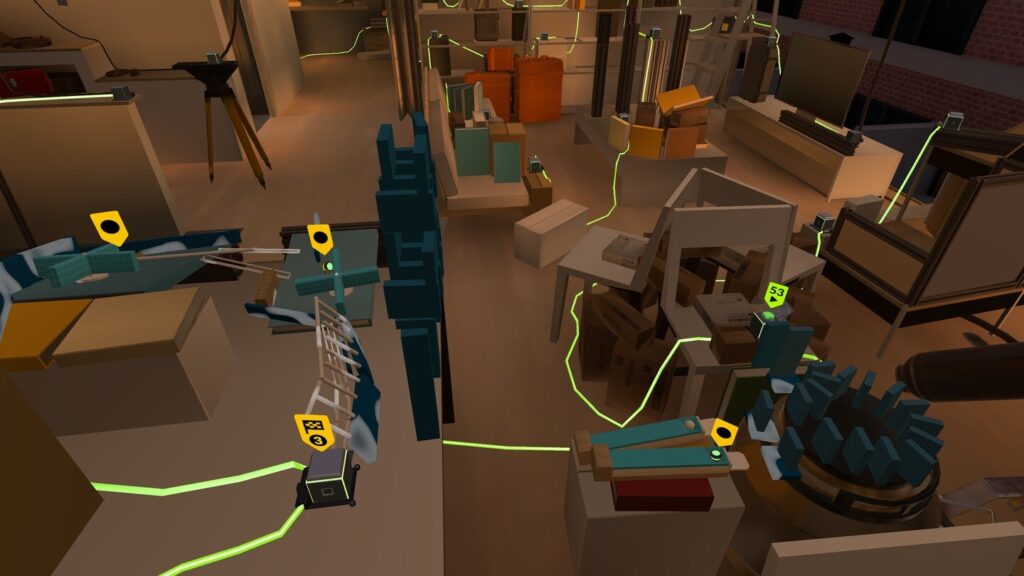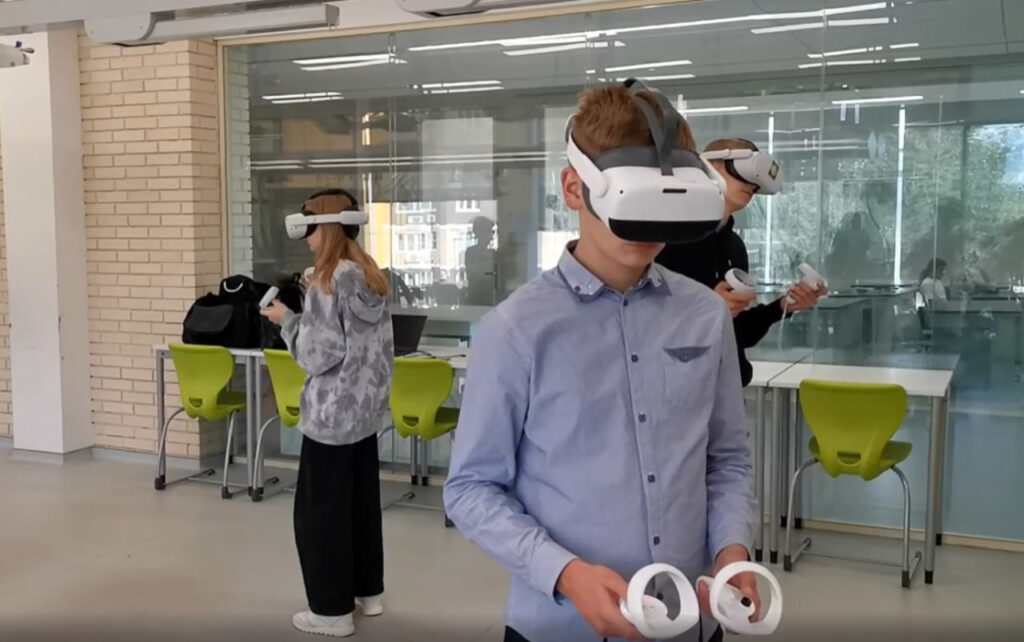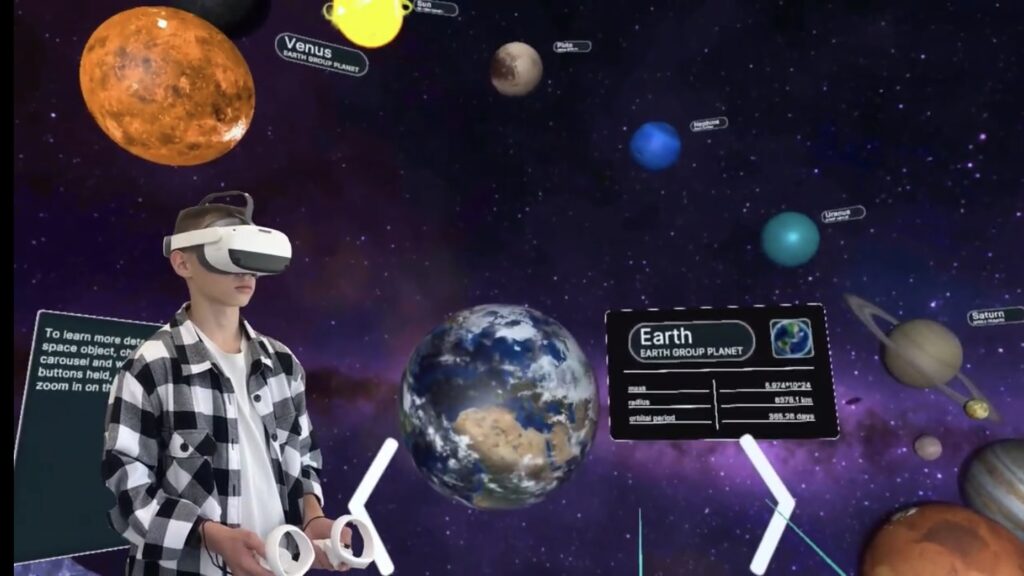

The world is changing faster than the traditional education system can adapt, and this gap is becoming increasingly noticeable. For parents, it’s essential to think about how to align their children’s learning with today’s rapidly evolving, technology-driven environment. As part of this adaptation, many families are discovering how virtual reality in education can spark a new level of engagement in STEM subjects right at home.
Today’s kids, often referred to as the Alpha Generation, grow up with digital technologies deeply integrated into their daily lives. For them, the virtual and real worlds seamlessly blend into one continuous experience. Parents play a crucial role in guiding their children through this terrain, encouraging them to explore educational VR apps rather than focusing solely on pure entertainment.
Integrating VR devices at home for VR learning can turn a simple evening into a valuable educational experience. Instead of relying solely on textbooks and static images, parents can introduce children to interactive virtual environments that teach core STEM concepts through hands-on experimentation.
Consider a VR physics-based puzzle game like Gadgeteer, available for platforms like Meta Quest and Pico VR. Designed as a VR puzzle experience grounded in the laws of physics, Gadgeteer challenges children to build intricate chain reaction machines that solve creative problems. Instead of simply tapping on a screen, young learners must physically arrange gadgets and components in a virtual space, gaining hands-on insights into principles like gravity, momentum, and cause-and-effect relationships.

By experimenting with different gadgets, children learn engineering thinking skills that extend far beyond any single puzzle. They discover how small tweaks—adjusting a lever’s angle or repositioning a gear—can radically alter the machine’s outcome. This trial-and-error learning process encourages persistence and resilience, nurturing a growth mindset where mistakes are seen as opportunities to learn rather than reasons to give up.

Moreover, Gadgeteer’s approach is not limited to transferring theoretical physics knowledge. It allows kids to visualize abstract concepts in a tangible, three-dimensional environment. Each success in building a functioning chain reaction machine reinforces their understanding of physics principles and inspires them to push their creativity further. Such immersive engagements can open doors to broader STEM interests, encouraging children to explore other areas of science, technology, engineering, and math.

In essence, a VR education app like Gadgeteer turns a household into a STEM lab where students gain confidence, develop problem-solving abilities, and spark curiosity in scientific exploration. It’s a prime example of how educational VR content transforms complex topics from distant theories into playful, meaningful discoveries—making learning at home both enjoyable and profoundly enriching.
It’s not just engineering puzzles that benefit from VR. Immersive apps related to VR biology and VR chemistry can also help children better understand complex scientific processes. Consider the example of a VR plant cell demonstration from XReady Lab. Such experiences let children move around cell structures, visualize organelles in three dimensions, and appreciate intricate details that textbooks and 2D images cannot convey.
By engaging multiple senses, virtual reality learning allows children to absorb information more naturally. This hands-on approach encourages experimentation, exploration, and curiosity—key elements in nurturing a genuine interest in STEM fields.
App stores are filled with diverse VR solutions for schools and home use. While not all apps align perfectly with formal curricula, their flexibility makes them gold for home-based learning. Parents can:
For instance, in our previous article on developing cognitive skills through VR—“Gamifying STEM with VR”—we shared how certain applications foster critical thinking and problem-solving abilities. Parents can use these insights to pick apps that blend engagement with learning value.

Technology in education enables personalized learning experiences that cater to each child’s pace and interests. When parents guide their children toward educational VR apps, they help them build confidence, creativity, and resilience in the learning process. Engaging with science and technology at home sets a positive tone for future academic pursuits.
For instance, XReady Lab’s approach to VR learning solutions fosters a love for STEM by making it interactive and relevant to real-world challenges. Emphasizing innovation and hands-on discovery helps children maintain long-term interest in these subjects, even as they move into more advanced topics.
This support from parents is crucial. Research and trends show that disinterest in STEM can start early if children find these subjects abstract or unattainable. By tapping into educational VR tools that transform complex concepts into immersive experiences, parents play an active role in keeping STEM learning accessible and exciting.
STEM skills are not only essential for future careers but also for understanding the world and making informed decisions. When parents encourage their children to engage with VR educational resources at home, they are investing in their children’s intellectual growth, empathy, and problem-solving abilities.

As parents guide children through virtual reality classrooms, they help them gain practical skills, discover their strengths, and develop resilience in tackling challenging problems. This mentoring role doesn’t require parents to be tech experts—just open-minded, supportive, and willing to explore new learning paths alongside their children.
Parents hold a powerful key to fostering a lifelong interest in STEM subjects right at home. By embracing virtual reality education and carefully selecting apps that blend fun with learning, families can create a supportive, stimulating environment that nurtures curiosity, confidence, and adaptability.
In a world evolving at lightning speed, it’s essential to provide children with the tools they need to thrive. Encouraging the use of educational VR apps at home is one step towards bridging the gap between traditional learning methods and the demands of the modern, tech-driven era. With the right guidance from parents, the Alpha Generation can become a generation of innovative thinkers, ready to embrace the scientific and technological challenges of tomorrow.
Frequently Asked
We prodive VR biology, VR physics, and VR chemistry simulations. Please, check our catalog.
Please, fill the form to get demo labs for free.
Please contact our customer support service at support@xreadylab.com or book a call with the team to find out the conditions and book the VR class set up at your school.
Subscription to XReady Lab interactive VR labs. If you are a school, then you are also given access to the VR classroom system. VR class system helps you easily launch VR lessons for a large number of students, follow the experience of each student, as well as customise the content without developers.
We adhere to the world’s generally accepted recommendations and research. Our products are suitable for children from 12 years old.